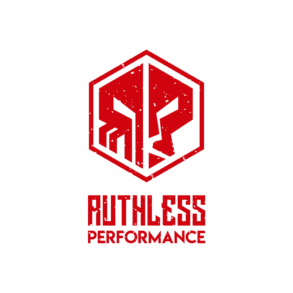Isometrics are something that we incorporate into more dynamic styles of training for a handful of reasons. Isometric exercises are exercises where the muscles must maintain the same level of tension. Traditional isometric exercises may be something like a wall sit, a plank, or 6-inches. Any exercise where the muscles are working but the joint angles surrounding the musculature are not moving is almost always an isometric.
At Ruthless, we sometimes hybridize this useful modality with classic lifts that most gym goers are more used to. Our programs will denote these combinations accordingly. Sometimes a program may have a Dumbbell Lateral Raise w/ Pause and sometimes it may be a Dumbbell Lateral Raise w/ Hold. Similarly you may see a Trap Bar Shrug with either a hold or a pause, other exercises with these add-ons may include a curl, leg extension, leg curl, face pull, and the list of possible exercises with holds and pauses goes on…
Is this just semantics? Or are these different exercises?
In short, they are different, but both serve to progress an exercise in some capacity. A pause is an isometric done between reps whereas a hold is an isometric done at the end of a set.
In the case of the Trap Bar Shrug, the delineation between the pause and the hold creates two very different outcomes. This is an interesting case because the shrug–much like the calf raise–tends to be a very ballistic exercise, bouncing out of the bottom from rep-to-rep. This bounce allows individuals to add way more weight than is actually effective, with the athlete then relying on elastic energy in the tendons rather than muscle contractility for a good portion of the lift.
A pause at the bottom and top of the shrug reduces the total weight lifted, making it a safer exercise while also placing more strain on the muscle–which is normally the point of a single-joint exercise like a shrug.
A hold at the end of the set of shrugs adds more time under tension without the eccentric damage associated with movement.
Both of these concepts are useful ways to add tension to an exercise when an athlete is between weights. Consider something like a lateral raise… A jump from a 5 lb dumbbell to a 10 lb dumbbell is a 100% weight increase–this is something that would be unthinkable on larger exercises like a squat. But to make the jump easier on smaller exercises, we can add more time under tension at the end of a set with a hold.
Another benefit of the hold is that as form starts to break down towards the end of a set the isometric hold is an easier way to load an exercise while an athlete is fatigued with minimal risk of injury.
The cheat sheet:
Pauses
- Between reps
- Minimizes reliance on the stretch reflex, placing more emphasis on the muscles
Holds
- At the end of a set
- Adds time under tension to an exercise where form may begin to breakdown while adding minimal risk of injury.
Both
- Great for muscle growth
- Creates a better mind-muscle connection

